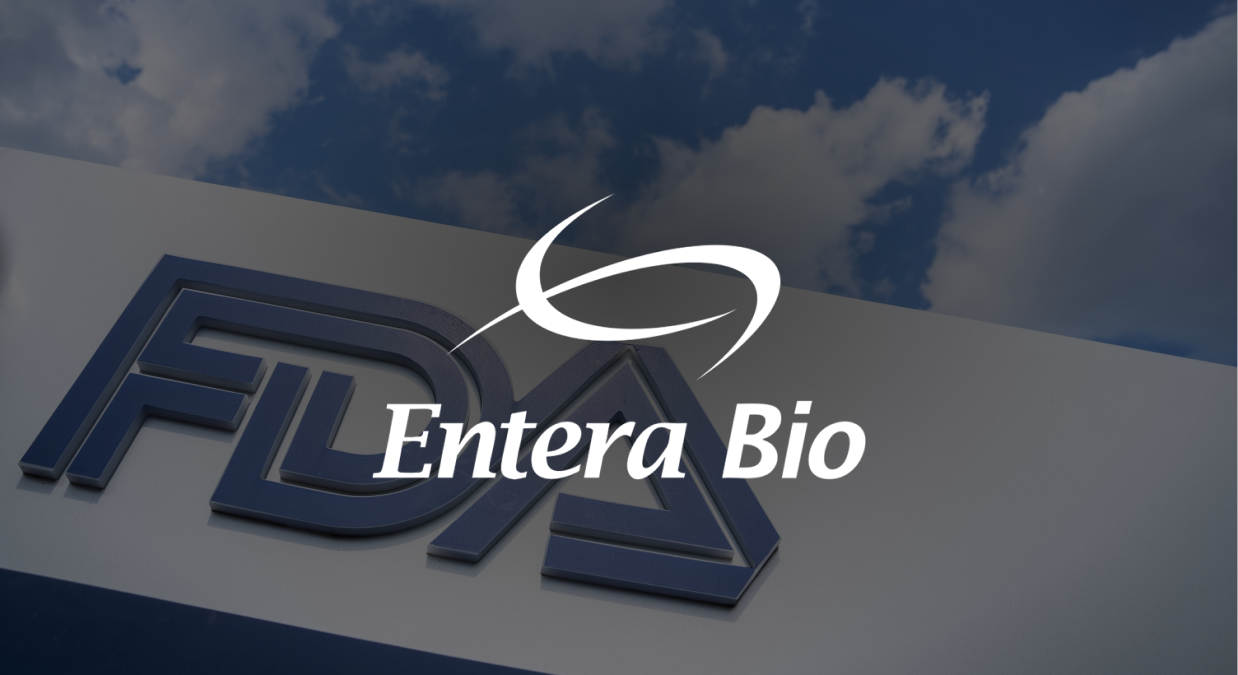Entera Bio Receives FDA Approval To Utilize Bone Mineral Density (BMD) As Primary Endpoint In Registrational Phase 3 Study Of EB613 For Post-Menopausal Women With Osteoporosis
FDA greenlights Entera Bio's Phase 3 trial for EB613, advancing oral osteoporosis drug with faster development pathway.
Breaking News
Jul 31, 2025
Simantini Singh Deo

Entera Bio Ltd., a company focused on developing oral peptide and protein replacement therapies, announced that the U.S. Food and Drug Administration (FDA) has agreed with its proposed clinical trial design for EB613, an oral treatment for postmenopausal osteoporosis. In response to a Type A meeting request, the FDA confirmed that a single, multinational, randomized, double-blind, placebo-controlled Phase 3 study would be sufficient to support a New Drug Application (NDA) for EB613.
The Phase 3 study will span 24 months and will enroll women with postmenopausal osteoporosis. The trial will evaluate the change in total hip bone mineral density (BMD) as the primary endpoint, while the incidence of new or worsening vertebral fractures will serve as the key secondary endpoint.
This represents a significant shift from previous regulatory expectations, where placebo-controlled Phase 3 studies for osteoporosis treatments typically required fracture incidence as the primary endpoint. The FDA’s agreement to accept BMD as the primary endpoint could potentially expedite the development timeline for EB613 and marks a notable milestone in Entera Bio’s clinical program.
Miranda Toledano, CEO of Entera, stated, “This regulatory update is a major milestone for Entera and the entire osteoporosis community. Our alignment with the FDA reflects the strength of our data and collaborative discussions. Importantly, it allows us to advance our clinical development program without having to wait for FDA’s qualification of the Study to Advance Bone Mineral Density as a Regulatory Endpoint (SABRE), which is still expected this year. We thank the FDA and the Review Team at the Division of Endocrinology for their constructive approach. We also thank the SABRE team for paving the path to innovation for osteoporosis treatment.”
He continued, “Osteoporosis afflicts more women than heart attack, stroke and breast cancer combined. Over 200 million women globally are estimated to have osteoporosis and remain vastly undertreated, despite efficacious injectable anabolic (bone forming) treatments. One in two women over the age of 50 will suffer a fracture due to osteoporosis. No new drug for osteoporosis has been approved by FDA since 2019; and innovation has stalled for close to a decade due to the size, duration, cost and ethical constraints associated with fracture endpoint studies.”
He further added, “In a silent disease, patient and clinician access to novel and alternative forms of validated mechanisms of action is important. We are developing EB613 as the first oral, once-daily anabolic tablet treatment to potentially serve this unmet medical need. EB613 is intended to increase skeletal mass, improve bone microarchitecture and reduce the risk of fracture.”
